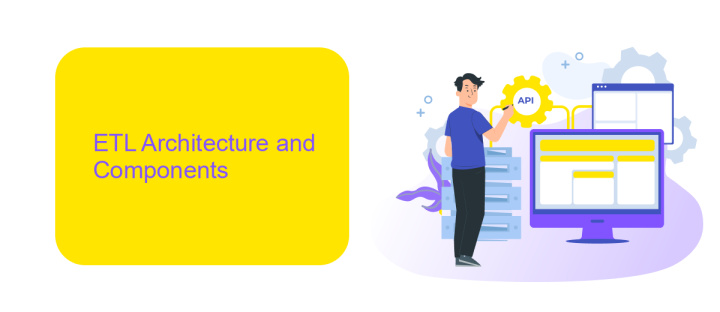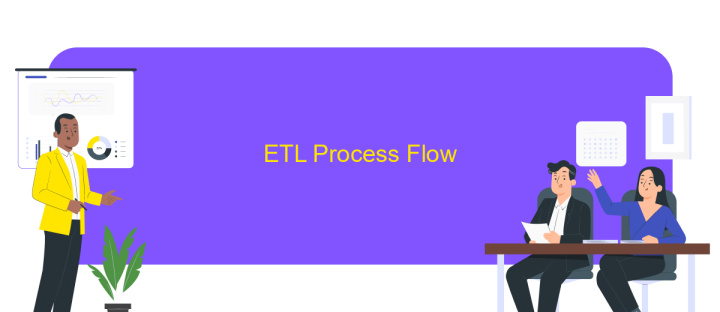Postgres Data Warehouse ETL
The integration of PostgreSQL as a data warehouse offers robust capabilities for handling large-scale data processing. This article delves into the ETL (Extract, Transform, Load) processes essential for efficiently managing and transforming data within a Postgres environment. By leveraging its powerful features, businesses can streamline their data workflows, ensuring high performance and scalability in their data operations.
Introduction
In today's data-driven world, businesses rely heavily on efficient data warehousing solutions to manage and analyze their vast amounts of information. PostgreSQL, a powerful open-source relational database, has become a popular choice for building data warehouses due to its robustness and scalability. However, setting up an effective ETL (Extract, Transform, Load) process is crucial for ensuring that data is accurately and efficiently moved from various sources into the Postgres data warehouse.
- Extract: Gathering data from diverse sources such as databases, APIs, and flat files.
- Transform: Cleaning, normalizing, and enriching the data to meet analytical requirements.
- Load: Inserting the transformed data into the Postgres data warehouse for analysis.
To streamline the ETL process, integrating with services like ApiX-Drive can be highly beneficial. ApiX-Drive automates data integration, allowing seamless data flow from multiple sources into your Postgres data warehouse. This not only saves time but also reduces the risk of errors, ensuring that your data warehouse is always up-to-date and ready for analysis.
ETL Architecture and Components

The ETL architecture for a Postgres Data Warehouse involves three primary components: Extraction, Transformation, and Loading. In the extraction phase, data is gathered from various sources, such as databases, APIs, and flat files. Services like ApiX-Drive can simplify this process by automating data collection from multiple platforms, ensuring data consistency and reliability. Once extracted, the data is then moved to a staging area where initial data cleaning and validation occur.
During the transformation phase, the raw data undergoes several processes to convert it into a suitable format for analysis. This includes data normalization, aggregation, and enrichment. Tools and scripts are employed to execute these transformations efficiently. Finally, in the loading phase, the transformed data is loaded into the Postgres Data Warehouse. This step often involves using batch processing or real-time data streaming techniques to ensure that the data warehouse is up-to-date and ready for querying. Properly designed ETL architecture ensures high performance, data integrity, and scalability.
ETL Process Flow

The ETL (Extract, Transform, Load) process flow is crucial for efficiently managing data in a Postgres Data Warehouse. It involves three main stages: extracting data from various sources, transforming it to meet analytical requirements, and loading it into the data warehouse for querying and reporting.
- Extract: Data is collected from multiple sources such as databases, APIs, and flat files. Tools like ApiX-Drive can facilitate seamless integration with various data sources, ensuring timely and accurate data extraction.
- Transform: The extracted data is then cleaned, normalized, and transformed to fit the schema of the data warehouse. This step may involve filtering, aggregating, and enriching data to make it suitable for analysis.
- Load: The transformed data is loaded into the Postgres Data Warehouse. This can be done in bulk or incrementally, depending on the volume and nature of the data. Efficient loading ensures that the data warehouse is up-to-date and ready for querying.
By following this ETL process flow, organizations can ensure that their Postgres Data Warehouse is populated with high-quality, timely data. Utilizing tools like ApiX-Drive can further streamline the process, making data integration more efficient and reliable.
Best Practices and Considerations

When setting up a Postgres Data Warehouse ETL, it is crucial to follow best practices to ensure efficient data processing and management. One key consideration is the optimization of data extraction processes to minimize the load on source systems. This can be achieved by scheduling ETL jobs during off-peak hours and using incremental data extraction techniques.
Another important aspect is the transformation phase. Data should be cleansed, standardized, and validated to maintain data quality and consistency. Leveraging tools and services like ApiX-Drive can streamline the integration process, allowing for seamless data flow between various sources and your Postgres Data Warehouse.
- Optimize data extraction to reduce system load.
- Schedule ETL jobs during off-peak hours.
- Use incremental data extraction techniques.
- Ensure data quality through cleansing and validation.
- Utilize integration tools like ApiX-Drive for seamless data flow.
Finally, monitoring and maintenance are critical for the long-term success of your ETL processes. Regularly review performance metrics and logs to identify and address any issues promptly. This proactive approach will help maintain the efficiency and reliability of your Postgres Data Warehouse.


Conclusion
In conclusion, implementing a Postgres Data Warehouse for ETL processes offers numerous advantages, including scalability, reliability, and seamless integration with various data sources. The ability to handle large volumes of data efficiently makes Postgres a robust choice for businesses looking to optimize their data management and analytics capabilities. By leveraging the power of SQL and advanced indexing techniques, organizations can ensure high performance and quick query responses, which are crucial for making informed decisions.
Moreover, integrating services like ApiX-Drive can significantly streamline the ETL process. ApiX-Drive provides a user-friendly interface and powerful automation tools that simplify data integration from multiple sources into your Postgres Data Warehouse. This not only reduces the time and effort required for manual data handling but also minimizes the risk of errors, ensuring data accuracy and consistency. As a result, businesses can focus more on analyzing data and deriving actionable insights, ultimately driving growth and efficiency.
FAQ
What is ETL in the context of a Postgres Data Warehouse?
What are the main steps involved in the ETL process for a Postgres Data Warehouse?
What tools can be used to automate the ETL process for a Postgres Data Warehouse?
How can I ensure data quality during the ETL process for a Postgres Data Warehouse?
What are the advantages of using a Postgres Data Warehouse for ETL processes?
Routine tasks take a lot of time from employees? Do they burn out, do not have enough working day for the main duties and important things? Do you understand that the only way out of this situation in modern realities is automation? Try Apix-Drive for free and make sure that the online connector in 5 minutes of setting up integration will remove a significant part of the routine from your life and free up time for you and your employees.

